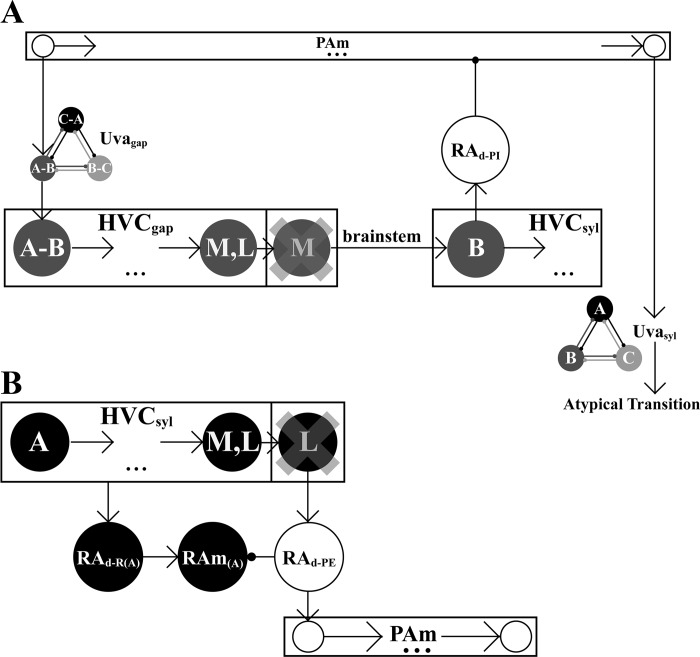Fig. 7.
A: medial HVC ablations are modeled by removing a subset of medial HVCgap chains. This prevents the HVC from terminating the activity of a neural chain in PAm that regulate inspiration. When activity in the PAm chain reaches the end, a signal is sent to Uvasyl resulting in the production of a new syllable. Generally, the syllable produced results in an atypical transition. B: lateral HVC ablations that result in song truncation are modeled by removing a subset of the lateral HVCsyl chains. This prevents the signal that would initiate a new gap, terminating the song.

